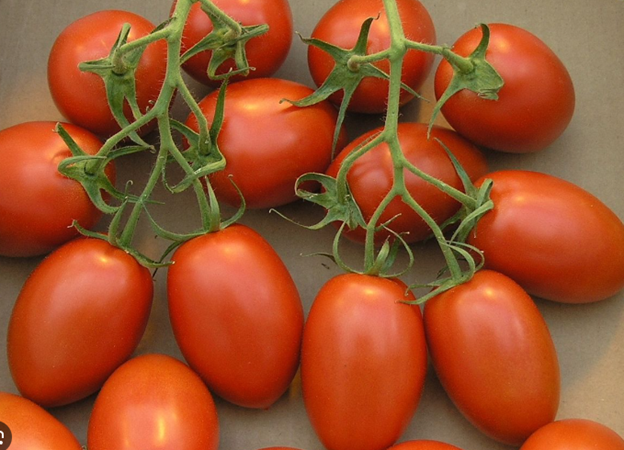Tyler Seeds
Roma Tomato
Roma Tomato
Couldn't load pickup availability
Roma Tomato
When to Plant Tomato Seeds
Before planting, determine whether you prefer determinate or indeterminate varieties of tomatoes. If you require a single harvest for purposes such as making sauce or preservation, opt for determinate varieties like Roma or Ace 55. Indeterminate types yield fruit over an extended period, with some varieties like Cherokee Purple, Black Krim, or Green Zebra starting later in the season. Due to their heat-loving nature, tomato plants generally cannot be started from seed outdoors in most areas because of short growing seasons. Seeds should be initiated indoors six to eight weeks prior to transplantation outdoors. Tomato seeds typically germinate within ten days. The plants develop rapidly, particularly if kept warm and provided with ample light.
Exercise caution when transplanting outdoors. Transplanting too early could expose plants to frost or cold spells, hindering growth or causing mortality. Tomatoes planted slightly later will quickly catch up to those transplanted early but stunted by cold weather.
While tomatoes thrive in warmth, nighttime temperatures are critical for successful growth. Generally, it is safe to begin hardening off seedlings when nighttime temperatures remain above 50°F consistently. At this point, your plants should be several inches tall with some branching. One method is to gradually expose them to outdoor conditions for increasing durations each day, starting seven to ten days before transplantation. Post-transition, they should be prepared for garden life.
Where to Plant Tomato Seeds
Once the seedlings reach two to three inches in height and possess a couple sets of true leaves, they can be transplanted into the garden or larger containers. Plant them deeper than they were initially potted, ensuring new roots form along the buried stem. You may plant them up to the top couple sets of leaves, which is beneficial if the plants have grown tall indoors and need to become stockier and stronger.
Typically, space your tomato seedlings two to three feet apart in a location that receives full sun throughout the day and has well-draining soil. A drip system is optimal for providing consistent water to the soil without wetting the foliage.
Insert tomato stakes or cages at the time of planting. Staking and caging help maintain fruit development off the ground (preventing diseases and pests) and keep the plant upright.
Optional: When transplanting tomatoes, incorporate a handful of organic tomato fertilizer or bone meal (a good phosphorus source) into the planting hole. Avoid high-nitrogen fertilizers designed for lawns, as these promote luxuriant foliage but can delay flowering and fruiting.
When planting seedlings, remove a few lower leaves. Here are two methods for setting seedlings in the soil:
- Place each root ball deep enough so that the bottom leaves are just above the soil surface. Roots will grow along the underground stem. Space seedlings 2 to 3 feet apart. Crowded plants will not receive sufficient sunlight, and the fruit may not ripen.
- Alternatively, lay long, leggy transplants on their sides in trenches 3 to 4 inches deep. Bury the stems up to the first set of true leaves. Roots will develop along the buried stem. If planting this way, consider positioning four plants in compass-point locations (north, south, east, west). This arrangement facilitates fertilization and watering in the center. Ensure adequate space for plant spread. Water thoroughly to mitigate root shock.
How to Plant Tomato Seeds
Dampen the potting mix before placing it in containers for increased efficiency. Add water until the mix remains compressed in your hand without dripping, breaking apart when poked. Fill containers with potting soil, gently firming it about an inch from the top.
Place two to three seeds per container and cover with soil. Keep the soil moist, avoiding saturation. Once plants form, increase watering. Position them in a well-lit area and rotate regularly.
When ready to transplant outside, add stakes or tomato cages in advance to support plant growth upright. It is difficult to fit mature tomato plants into cages without damaging branches.
How to Harvest Tomatoes
- Leave garden tomatoes on the vine as long as possible.
- Harvest tomatoes when they are firm and very red, regardless of size, with perhaps some yellow remaining around the stem. Harvest tomatoes of other colors (orange, yellow, purple, or another rainbow shade) when they turn the correct color.
- If temperatures start to drop and your tomatoes aren’t ripening, use one of these methods:
- Pull up the entire plant, brush off dirt, remove foliage, and hang the plant upside down in a basement or garage.
- Place mature, pale green tomatoes, stem up in a paper bag and loosely seal it. Or wrap them in newspaper and place in a cardboard box. Store in a cool (55°F to 70°F), dark place. Cooler temperatures slow ripening; warmth speeds it. Check weekly and remove soft, spotted, diseased, or ripe fruit.
- Never place tomatoes on a sunny windowsill to ripen. They may rot before they are ripe!

